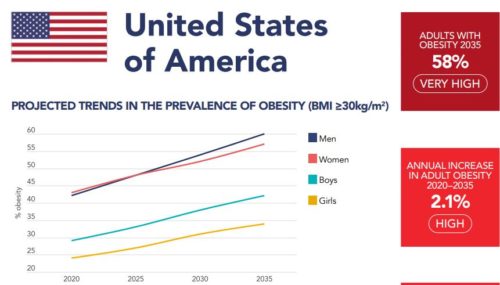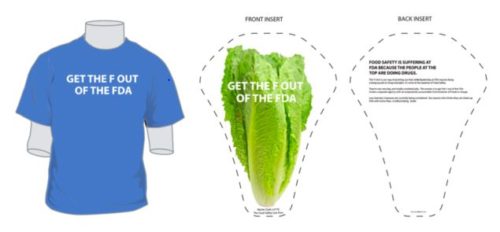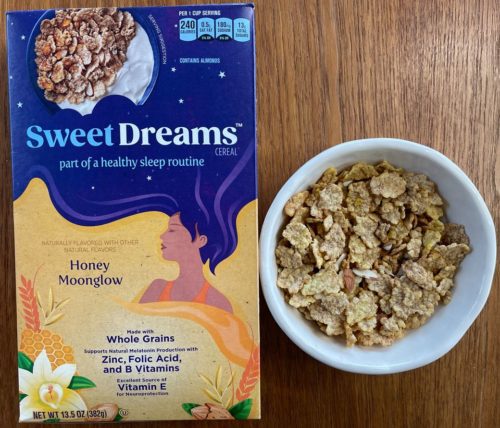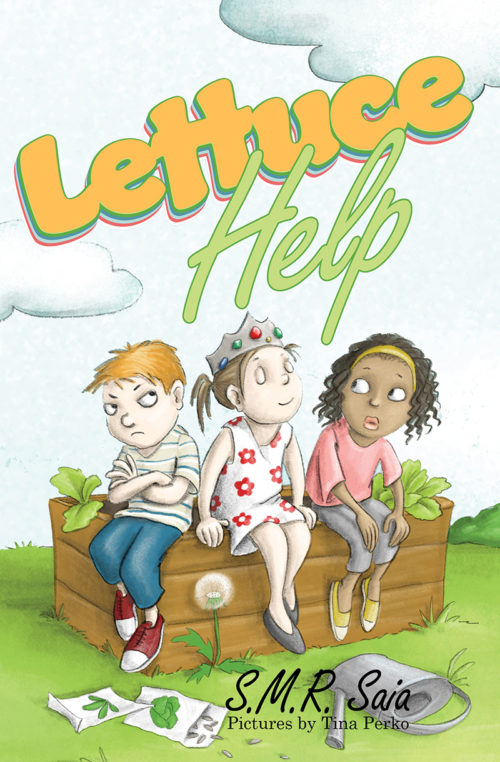Weekend reading: stopping the rising prevalence of overweight and obesity
The World Obesity Atlas 2023, published by World Obesity Federation, predicts that unless preventive interventions succeed, by 2035:
- The global economic impact of overweight and obesity will reach $4.32 trillion annually and constitute nearly 3% of global GDP.
- The majority—51% or more than 4 billion people—will be living with overweight or obesity.
- One in four people—nearly 2 billion—will have obesity.
- The economic impact of overweight and obesity is estimated to be over $370 billion a year in low and lower-middle income countries alone.
- Childhood obesity could more than double.
Here’s the prediction for the U.S.

In the report, the World Obesity Federation:
- Notes that member states of WHO committed to halt the increase in obesity rates at 2010 levels by 2025. No country is on track to meet these targets.
- Calls on governments to develop national action plans.
- Calls on governments to improve health care.
- Calls for building on the ROOTS framework for tackling obesity: Recognising the root causes, monitoring Obesity data, investing in Obesity prevention, ensuring access to Treatments, and adopting a Systems-based approach.
The documents:
- The press release
- The World Obesity Atlas 2023 (this includes predictions for WHO member nations)
Comment
This is a global problem requiring global solutions., and actions by every government, including ours. We need a national obesity prevention plan focused on strategies like to work (reduction of food insecurity, improved health care, better education, restrictions on marketing junk food, etc).
Otherwise, we are all headed to Wall-E, which will turn out to be prescient, rather than dystopian.
*******
For 30% off, go to www.ucpress.edu/9780520384156. Use code 21W2240 at checkout.





